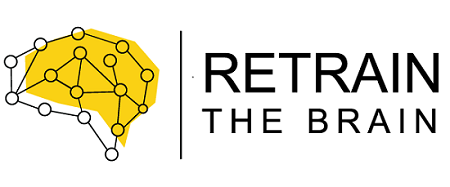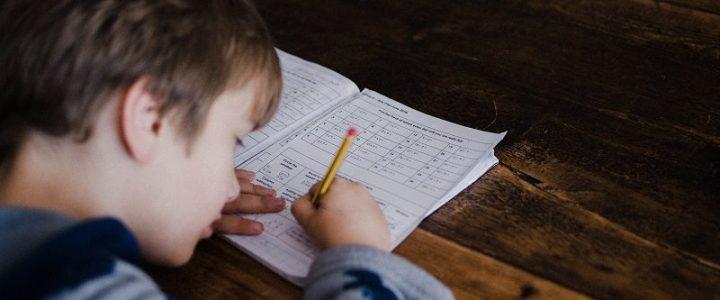Has your child been diagnosised with dysgraphia or dyslexia?
I know how worrying this must be for you. It is for many parents and carers; you aren’t alone. Even better, help is available.
In this article, we’ll clarify a few misconceptions about dysgraphia and dyslexia, give you some signs to look out for, explain why children have dysgraphia or dyslexia symptoms, and what we can do to support your child’s developing brain.
Dysgraphia and dyslexia are known as specific learning difficulties (SpLD).
Specific learning difficulties or diagnoses can sometimes stem from problems with central nervous system (CNS) function resulting from retained neonatal reflexes.
Are dysgraphia and dyslexia interchangeable?
No. Dysgraphia and dyslexia are not the same. Dysgraphia is difficulty writing; dyslexia is difficulty reading. They do not necessarily occur together: your child can have one, or the other, or both.
What are the signs my child has dysgraphia or dyslexia?
Signs your child may have dysgraphia include:
- They have messy handwriting
- They are unable to put their thoughts down on paper
- Tight, awkward pencil grip and body position when writing
- Attention and focus issues at school
- Difficulty telling shapes apart, or spacing letters
- Trouble organizing words from left to right
- Inability to stay within the margins of a page
- Inability to use scissors, or hold a pencil correctly
- Difficulty with fine motor tasks, such as tying shoelaces, doing up buttons, and picking things up
- Unable to follow directions or rules in games
- They often spell words incorrectly, and mix up upper (capital) and lower (small) case letters
- They avoid writing
- They don’t write in complete sentences
- They have trouble telling stories
- They leave out important facts and details of a story.
Signs your child may have dyslexia include:
- Difficulty learning and using spoken and written language
- Difficulty breaking down, combining, or manipulating word sounds
- Difficulty converting letters to sounds
- Slow, inaccurate reading
- Difficulty recognizing age-appropriate sight words
- Difficulty learning to spell correctly
- Difficulty learning and remembering words with more than one syllable
- Limited reading comprehension
- Their spoken language skills are stronger than their written skills
- Difficulty quickly naming color, object, and letter sequences
- They need to see or hear concepts many times before learning them
- Distracted by sights or sounds
- A drop in school performance
- Inconsistent school work
- Their teachers may say, ‘If only they’d try harder with their reading’.
What causes dysgraphia and dyslexia symptoms?
Dysgraphia and dyslexia symptoms (along with all other learning difficulties) are not connected to low intelligence at all.
We are all born with a set of reflexes that protect our bodies (via involuntary movement), build muscle tone, and create brain connections. These are referred to using various names, including neonatal reflexes, foetal reflexes, primary reflexes, newborn reflexes, developmental reflexes, atavistic reflexes, and most commonly (though not necessarily the best term), primitive reflexes.
Children’s bodies normally integrate these reflexes as they develop, and their brains become more advanced. But in some cases, their bodies retain these reflexes for longer than is needed. This can prevent children’s brains and CNS from maturing in the ideal timeframe, which affects higher brain function and voluntary movement patterns.
When this happens, there can be a ‘battle’ going on between their neonatal reflexes and the voluntary movement and higher level thinking they need to learn, including reading and writing skills. Consequently, dysgraphia and dyslexia symptoms can result.
So what may seem like an inability or unwillingness to learn may actually be beyond your child’s control.
Will my child grow out of their dysgraphia or dyslexia?
Not on their own, no.
Dysgraphia or dyslexia symptoms often stem from retained neonatal reflexes. These neonatal reflexes are generally inhibited or ‘put to sleep’ between 4-6 months of age. Once this sensitive period has passed, the integration no longer happens through maturation. Children will no longer ‘grow out of’ these reflexes. Many adults with the same kind of symptoms would have retained neonatal reflexes. The window of opportunity has essentially closed. However, Retrain the brain offers therapies that go back and give the brain a second chance at integrating these reflexes.
Children whose dysgraphia or dyslexia symptoms are not addressed may experience frustration, delayed learning and development, and self-esteem challenges. They will certainly notice they are different to their classmates.
I can help you and your child by performing a non-invasive assessment (an assessment of your child’s physical abilities), which allows me to then treat the symptoms of dysgraphia & or dyslexia.
This assessment and treatment can also help with any other learning difficulties your child may be experiencing. The assessment detects any retained reflexes, and identifies signs of immaturity in many areas: from the general coordination and balance your child needs for posture and sitting still, to the eye movements and coordination they need to read, write, copy, or catch a ball.
Is there anything that can be done to help my child with dysgraphia and dyslexia?
Yes. The good news is that a lot of dysgraphia and dyslexia symptoms can be resolved.
How?
Our brains have the ability to change in response to our experiences. With retraining, anyone’s brain can change, including your child’s.
I use two methods to support you or your child to integrate their retained neonatal reflexes. Both are totally drug-free and non-invasive therapies. ‘Brain Therapy for Neonatal Reflexes and General Reflexes in Adults and Children’ was developed by Bruno Chikly of the Chikly Health Institute.
The second method (called the INPP method because it was created by the Institute for Neuro-Physiological Psychology) is movement-based therapy.
Both methods focus on why your child’s dysgraphia or dyslexia exist. Unlike some other therapies, they treat the underlying cause of the symptoms (CNS immaturity), and not just the symptoms themselves.
Once I’ve completed an assessment, I can evaluate and quickly treat your child’s reflexes and ultimately the cause of the learning difficulties.
Once the underlying cause is pinpointed and treated, many of your child’s symptoms will disappear.
How do I know this therapy will work?
Retrain the Brain offers research-based programs proven to support your child’s brain development, learning, and health. The INPP was established in 1975. Since then they’ve developed trusted ways to pinpoint and assess signs of CNS immaturity in children.
Parts of the INPP method have also been independently researched via more than 20 studies published in peer-reviewed journals.
I’ve been trained in both the INPP method and in Brain Therapy for Neonatal Reflexes and General Reflexes in Adults and Children. I’ve seen first hand that they work. I’d love to help make a difference to you and your child.
Your child’s dysgraphia or dyslexia symptoms are common and more importantly, there is help available. For an initial interest pack to see if an assessment would be helpful, please contact me.



